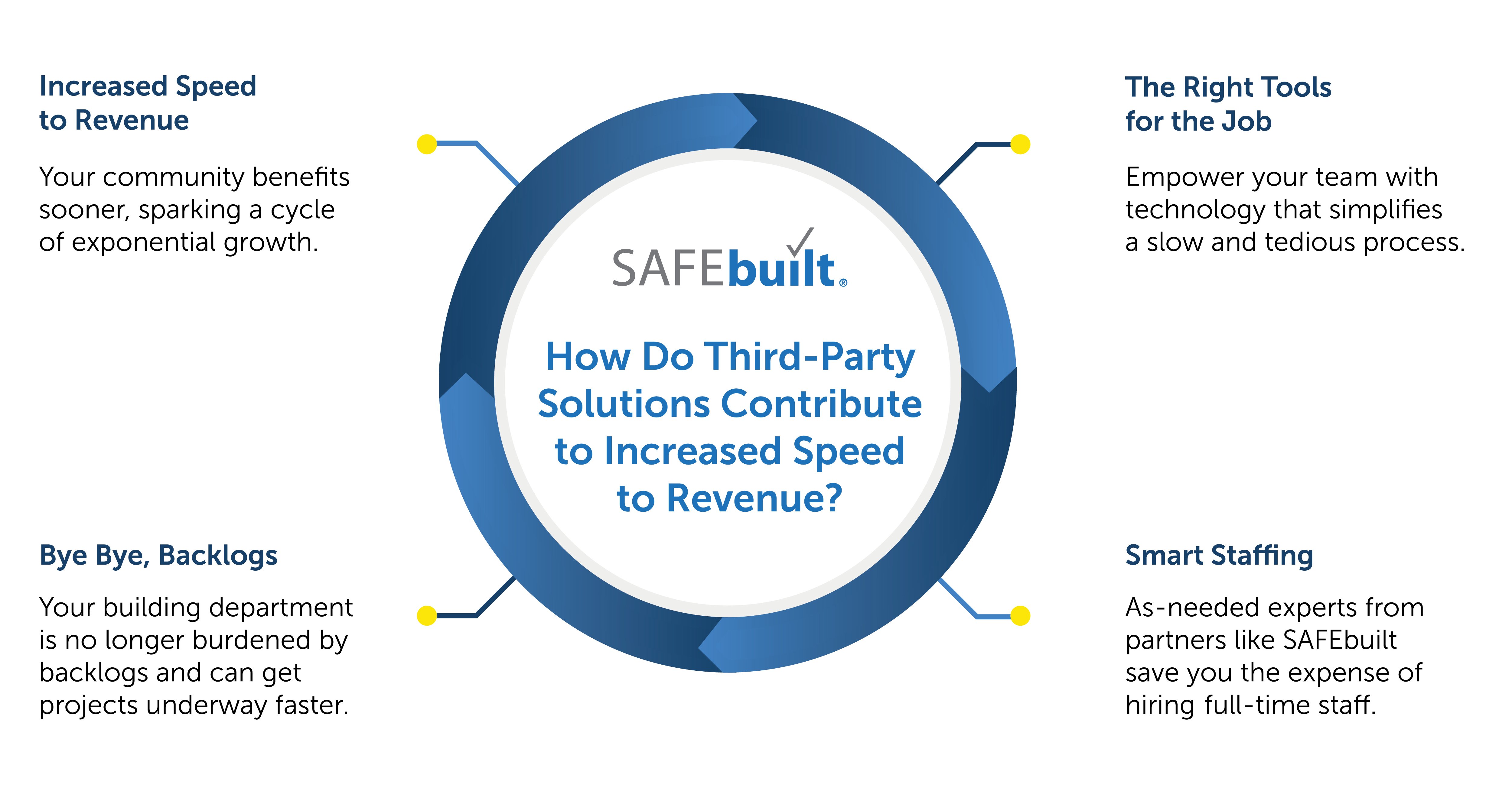Lengthy permit turnarounds and building plan review backlogs are an all-too-common trend in communities across the country. And this backlog burden is shared among municipalities, developers, residents, and communities as a whole, posing short- and long-term implications that hamper improvement and growth.
But imagine if you could trade out building plan review backlogs, customer complaints, and vacant lots for faster plan review turnarounds, consistent service, and a thriving community.
Let’s find out how you can turn this vision into a reality.
What usually holds up plan reviews?
Plan reviews can get bottlenecked for a long list of reasons, including:
- A lack of communication between permit applicants, departments, and jurisdictions
- Applicants aren’t clear on what’s required when submitting a plan (or why a project requires a design professional)
- A long list of comments on plans that have been resubmitted
- Construction booms that bring an onslaught of permit applications (including project your team might not be equipped to handle)
- Lack of budget or time to hire new staff to complete reviews (often correlated with the concern that the department will be overstaffed when workloads slow back down
The side effects of plan review backlog
With plan review backlogs comes a flood of complaints from developers who are waiting to break ground and residents who want to see their homes and other projects completed.
The impact plan review backlog can have on your community’s well-being is immense. When developers can’t get their permits quickly, projects cease to move forward, and your community faces vacant lots and unfinished jobs. To make matters worse, developers might go elsewhere in search of more efficient service. And as the backlogs build up, your department’s bottom line suffers, since you aren’t efficiently collecting permit fees.
Simplify plan reviews moving forward
By taking four intentional steps to make your department more efficient, you can achieve the 5-day residential plan review turnarounds (and 10-day commercial turnarounds) that we’ve been able to deliver in our 1,000+ partner communities around the country.

Step 1: Identify (and eliminate) wasted time spent during plan reviews
The first big step toward faster building plan reviews is actually a handful of small steps, all of which lead to a better, smarter process for your municipality. In order to improve efficiencies and keep up with development, it’s important to implement these must-have approaches to plan reviews:
- Standardized submittal forms — Ensure clear, consistent application forms and requirements for permit applicants to avoid misunderstandings and confusion early on.
- Clear submittal checklists — Provide a submittal checklist to applicants indicating all of the items needed to submit a complete plan.
- Pre-screening process — Train intake staff to pre-screen proposed submittals for minimum submittal requirements, catching any red flags right away.
- Minimum set standards — Require that projects be designed to minimum set standards, ensuring approval can be completed within two reviews.
- Internal process outlines – Measure work performance against a set timeframe for each step of the process.
- Team assignment lists — Keep close tabs on the workloads of individual team members to maintain flexibility and progress.
- Detailed revision letters — Provide a revision letter to applicants to communicate any issues in a clear and concise manner, identifying specific problems and their locations within the plan, as well as how changes to the plans should be made.
To improve the efficiency of your plan review process even further, think about leveraging Electronic Plan Review (EPR). Eliminating the need to print plans, mail them, and wait for review and return, EPR offers a cost-effective option that can help communities like yours boost their bottom line, improve customer service, and get caught up fast.
Step 2: Set proactive performance goals and metrics
Taking the time upfront to establish proactive performance goals and metrics is critical to gauging your department’s progress so it can improve over time. While this might seem like common sense, this step often slips through the cracks during busy plan review seasons. 
As you think about the kinds of performance metrics you should implement within your department, be sure to include:
- Weekly metrics and goals
- Detailed reporting schedules
- Routine reports to track and summarize activities
Once you’ve outlined realistic goals and decided on reasonable performance metrics for your department, make a point to consistently share those metrics with your team, and use your measurements to identify opportunities for improvement. This will give you the confidence you need to know your building department is operating at maximum effectiveness, no matter the workload or season.
Step 3: Encourage rock-solid communication
Communication, both among municipal staff and externally with customers, is a critical component to speeding up the plan review process. Internally, department supervisors should provide a well-defined plan review process for examiners to follow. This process might include:
- Internal checklists
- Plan review timelines
- Handouts detailing codes and regulations
It also falls to supervisors to review the work of plan examiners, identifying coachable moments to help them improve their skills and make the process a good one for the customer. And when it comes to establishing trust and goodwill among developers and residents, building departments need to encourage a two-way communication street that ensures full transparency and understanding throughout every stage.
Send clear external communications
It’s essential that department staff know how to verbally communicate correct instructions, guidelines, and expectations to developers and residents when needed.
By delivering clear, appropriate responses to customer questions as they come in, whether over the phone or in person, you can help prevent misunderstandings, confusion, errors, and frustrations throughout the rest of the permitting process.
In many cases, this might also include proactively answering questions on your website or portal (e.g., how to make changes to a project plan).
Step 4: Make sure you have the right staff (and set them up for success)
Sometimes, internal departments simply can’t handle the workload that comes in during a busy season. Building departments can take a number of actions to enhance the efficiency of their internal employees during these busy times, including:
- Hiring experienced, versatile reviewers — Find plan examiners who have the know-how needed to take on different kinds of plans, from the simplest residential applications to complex commercial projects.
- Establishing a continuous training program — Leverage experienced staff or a professional training agency to train staff on the proper ways to pre-screen submittals, communicate with applicants, and perform reviews.
- Maintaining accurate workload assignments — Assign a realistic number of plan reviews to staff, understanding the skill sets of individual reviewers and allotting work accordingly.
- Encouraging ongoing communication — Share progress among team members and adapt to changing workloads, letting other team members step in to help when necessary.
Turn these steps into action
Even with these steps in mind, one obvious question remains: How do municipalities like yours actually apply these strategies?
The answer — you get to decide what’s right for your community:
- Implement it gradually on your own (using some of our tips)
- Implement it quickly with some help (e.g., third-party plan review)
Not sure how to gain traction? Lean on our team of experts to help.


